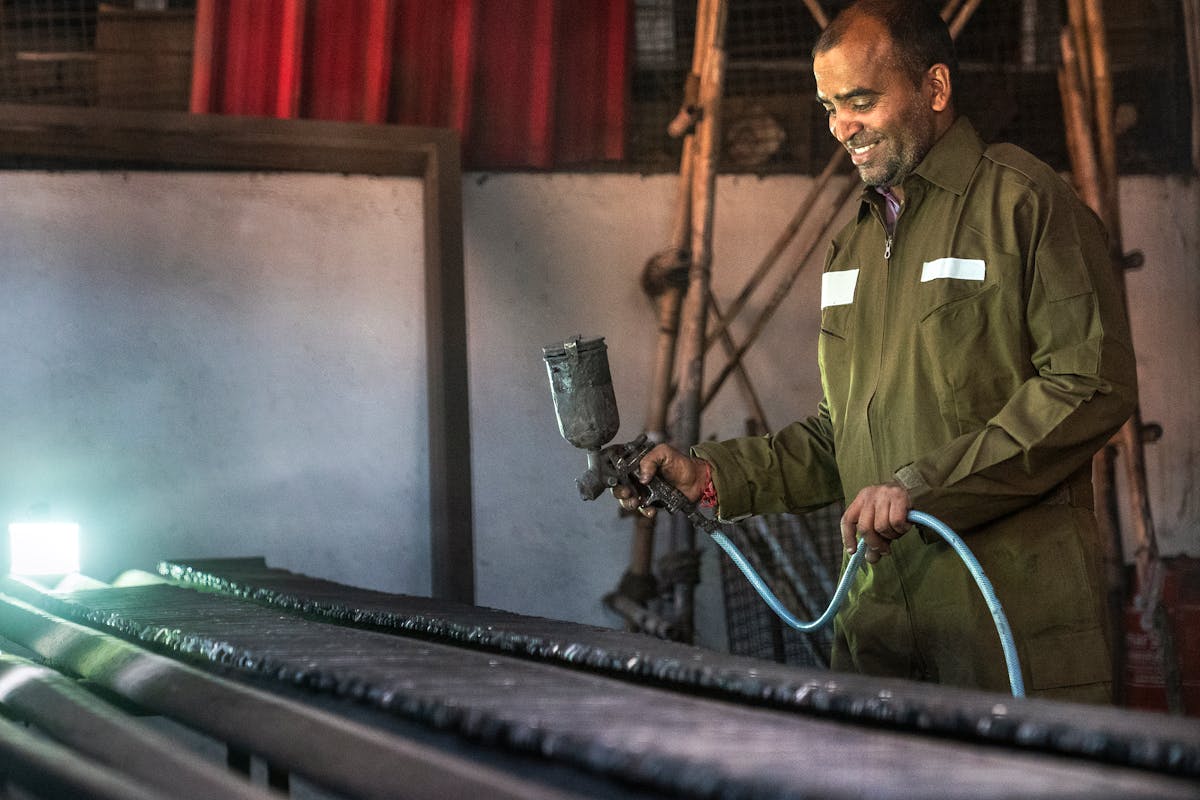Missouri’s Minimum Wage Will Increase by 10 Cents Per Hour Effective January 1, 2013
As Missouri gears up for a 10 cent increase in its minimum wage, effective January 1, 2013, it raises a multitude of questions about the economic implications of this move. Does it signify an encouraging step towards improving the standard of living for low-income workers, or could it pose a detriment to small businesses and the overall employment rate in the region? This seemingly small increment, which will push the minimum wage to $7.35 an hour, warrants closer examination, inviting us to ponder on its potential impacts and the broader economic landscape it ties into.
Understanding Missouri’s Wage Increase
In January 2021, Missouri’s minimum wage experienced a significant rise, a move that has sparked both optimism and concern among its populace. This escalation in wage legislation was a result of an ongoing effort to provide a livable wage for all workers within the state, reflecting a nationwide trend towards progressive wage policies.
The economic implications of this wage increase are multifaceted. On one hand, it provides low-income workers with a higher income, enabling them to meet the rising cost of living. This can stimulate spending and economic growth as increased disposable income often translates into higher consumer demand. However, critics argue that the increase can have negative repercussions on businesses, particularly small and medium-sized enterprises. They contend that the higher labor cost may lead to reduced hiring, job losses, and potentially, business closures.
While the full economic impact of the wage increase remains to be seen, it’s clear that the move has ignited a passionate debate about wage legislation in Missouri. It serves as a demonstration of the ongoing struggle to balance the need for fair wages with the economic realities faced by businesses. It’s a complex issue, indicative of the wider challenges faced in today’s socio-economic landscape.
Historical View of Minimum Wage
To comprehend the full impact of Missouri’s current minimum wage increase, we must first consider the historical context of past wage rates within the state. This historical perspective will enable us to accurately measure and analyze the magnitude of the present increase. Additionally, comparing Missouri’s wage evolution to national trends can provide valuable insights into the state’s position and progress relative to the broader U.S. economy.
Missouris Past Wage Rates
How has Missouri’s minimum wage evolved over the years? To understand, we must explore past wage trends and examine wage rate changes. In 2007, Missouri’s minimum wage stood at $6.50 per hour, a figure above the federal minimum wage. Following a voter-approved measure in 2006, the state’s wage rate was set to increase annually in line with the Consumer Price Index.
This policy led to a consistent, albeit slow, rise in the minimum wage over the following years. By 2012, Missouri’s minimum wage had increased to $7.25 per hour, matching the federal minimum wage. The state’s proactive approach to adjusting its wage rate, in response to inflation and cost of living changes, is significant.
However, the increase announced for 2013, a mere 10 cents, was the smallest hike in recent years. This could be attributed to the relatively low inflation rate during 2012. In sum, Missouri’s minimum wage progression has been steady, influenced by a dynamic policy that adjusts to economic indicators. The state’s approach to wage rate changes demonstrates a commitment to maintaining a living wage for its workers.
National Wage Comparisons
Examining historical trends in national wage comparisons provides valuable insight into the broader context of Missouri’s minimum wage evolution. Across the United States, minimum wage rates have varied considerably over time due to a variety of factors. The primary drivers of these wage disparities include cost of living adjustments, regional economic conditions, and legislative changes.
In particular, regional variations in minimum wage rates have been a considerable factor in creating wage disparities. For instance, states on the West Coast and in the Northeast have traditionally set higher minimum wage rates than those in the Midwest and South. This is largely due to differences in the cost of living and economic conditions across these regions.
Moreover, legislative changes at both the state and federal levels have also played a key role in shaping wage disparities. Over the years, several states have enacted laws to increase their minimum wage rates above the federal minimum, leading to a patchwork of wage floors across the country.
Impact on Missouri’s Economy
The ripple effect of Missouri’s minimum wage increase on the state’s economy is a multifaceted issue worthy of close scrutiny. Employment trends and wage disparity are two key areas that may be impacted by this change.
Employment trends may shift with the higher wage demand. Businesses, particularly smaller ones, may experience a strain on their financial resources. This could potentially lead to a decrease in hiring rates or even job cuts. However, it is also possible that the wage increase may foster a more motivated and productive workforce, which could enhance economic output.
The wage disparity issue is also critical. Raising the minimum wage may reduce the gap between the lowest and highest earners. However, it could also unintentionally widen the chasm between those who have jobs and those who are unemployed, particularly if businesses respond to increased wage costs by reducing their staff numbers.

The Beneficiaries of the Increase
While the broader economic implications of Missouri’s minimum wage increase are complex and potentially challenging, it is undeniable that certain groups stand to gain substantially from this change.
Primary among the beneficiaries are the low-income wage earners, who will directly feel the positive impact of the wage increase. Many of these individuals work long hours in physically demanding roles, and any increase in their pay rate will translate into a significant improvement in their living conditions.
Additionally, businesses that employ a majority of low-wage workers may also stand to benefit from the increase. Higher wages often lead to increased employee satisfaction and reduced turnover, which can result in improved productivity and lower hiring and training costs.
Lastly, the local economy could experience a positive ripple effect as these wage earners have more disposable income to spend on goods and services.
To summarize: – Low-income wage earners will see a direct improvement in their living conditions. – Businesses employing these workers may experience increased productivity and reduced turnover. – The local economy could benefit from the increased spending power of these wage earners.
While the long-term effects remain to be seen, these groups are likely to see immediate benefits from the minimum wage increase in Missouri.
Comparing With Other States
To fully understand the implications of Missouri’s minimum wage increase, it is essential to compare it with the national minimum wage standards and practices of other states. This comparative analysis will provide a broader perspective on the economic impact within the context of Missouri’s local economy. In addition, it will shed light on how Missouri’s policies align or diverge from national trends and the potential consequences of these decisions.
National Minimum Wage Overview
In the grand tapestry of economic policy, minimum wage serves as an essential thread interconnecting the livelihoods of workers across the nation. Governed by federal regulations, the minimum wage sets a floor for earnings, aiming to guarantee a basic standard of living. However, the national minimum wage is not static, and it’s subject to changes paralleling economic and political climates.
The existence of wage disparities among states is a striking reality, which is largely due to the flexibility states have in setting their own minimum wages above the federal threshold. Here is a closer look at this:
- The federal minimum wage is $7.25 per hour as established by the Fair Labor Standards Act. Yet, states like Washington and Massachusetts offer higher rates, at $13.69 and $13.50 respectively.
- Some states, such as Alabama and Louisiana, do not have a state minimum wage and as a result default to the federal level.
- Other states like Missouri, have chosen to incrementally increase their minimum wage. Missouri’s minimum wage as of 2021 is $10.30 per hour, up from $7.85 in 2018.
These variances reflect the economic diversity across the nation and underscore the ongoing debate about the appropriate level of minimum wage.
Impact on Missouris Economy
Analyzing the impact of Missouri’s minimum wage increase on its economy requires a comparative lens to fully appreciate the nuances involved. When juxtaposed with neighboring states like Kansas and Iowa, which maintained their federal minimum wage levels, the variances in employment trends become evident.
Following the wage increase, Missouri experienced modest job growth, particularly in lower-wage sectors such as retail and hospitality. This suggests that the wage hike did not necessarily deter businesses from hiring. Conversely, Kansas and Iowa saw relatively stagnant job growth in similar sectors during the same period, indicating that wage levels could indeed influence employment trends.
The wage increase also positively impacted consumer spending in Missouri. With more disposable income, Missouri’s working class could afford to spend more, thereby stimulating local businesses and the broader economy. Comparatively, consumer spending in Kansas and Iowa remained relatively unchanged, highlighting the potential economic benefits of wage increases.
The Future of Missouri’s Wage
A significant increase in Missouri’s minimum wage is looming on the horizon, a potential game-changer for both employers and employees. Future projections, based on current wage trends, suggest that this growth will continue, potentially outpacing the rate of inflation. Economic forecasts are optimistic, indicating a positive outlook for the labor market.
The impact of this wage increase will be broad and significant. Here are three primary areas to take into account:
- Workforce Impact: As wages increase, companies may need to adjust their workforce strategies. This could lead to a shift in the labor market dynamics, with potential effects on job availability and employment rates.
- Company Profitability: Higher wages mean increased costs for businesses. Some companies may need to find ways to offset these costs, which could lead to price increases, efficiency drives, or both.
- Living Wage Threshold: The increased minimum wage in Missouri brings many workers closer to a living wage, but it’s essential to recognize that a living wage varies by location and individual circumstances.
This future of Missouri’s wage is largely dependent on how these factors, among others, interact and evolve over time. It represents a complex, dynamic element of the state’s economy.
Positive Effects on Living Standards
Significant improvements in living standards can be expected as a result of Missouri’s minimum wage increase. The rise in the minimum wage will directly contribute to the ability of workers to meet their basic living expenses, which include rent, utilities, food, transportation, and healthcare. This becomes particularly essential when we consider that a large chunk of the low-wage workforce often struggles to make ends meet with the wages they currently earn.
An increase in minimum wage has the potential to enhance the quality of life for Missouri’s low-wage workers. Higher wages generally mean better access to necessities, which directly translates into improved living standards. This could lead to a decrease in financial stress and increase the overall wellbeing of these individuals.
Furthermore, with more income, individuals can engage in activities that they previously could not afford. This might include furthering education, investing in better healthcare, or saving for future financial security. These enhancements in lifestyle not only improve the current living conditions but also secure a brighter future.
Criticisms and Challenges Ahead
Despite the positive outlook on Missouri’s minimum wage increase, it is not without criticisms and potential challenges. The primary concerns stem from worker sentiment and business responses to the wage hike.
- Worker sentiment is mixed, with some fearing that the increase will lead to job cuts or reduced hours as businesses struggle to maintain profitability. There is also worry that while the wage increase may seem beneficial in the short term, it could lead to inflation, negating the intended benefits.
- Small businesses, in particular, have expressed concerns about the increased labor cost. They argue that the hike could force them to reduce staff, limit operating hours, or even close their doors. Larger corporations might absorb the increased costs more easily, but for smaller enterprises, the wage increase could be debilitating.
- The third issue that arises is the potential for job outsourcing. Companies might opt to outsource jobs to regions with lower labor costs, a move that could lead to job losses in Missouri.
Frequently Asked Questions
What Was Missouris Minimum Wage Before the 10 Cents Increase?
Analyzing historical wage trends, Missouri’s minimum wage prior to the 10 cent increase on January 1, 2013, can be determined. However, the exact amount is contingent on specific, verifiable data from that time period.
How Often Does Missouri Review Its Minimum Wage Rates?
Missouri reviews its minimum wage rates annually. The wage adjustment frequency is tied to the cost of living, ensuring workers’ pay keeps pace with inflation. This policy provides a systematic, yearly review of wages.
Who Decides on the Minimum Wage Increase in Missouri?
The minimum wage increase in Missouri is determined by state lawmakers and officials, through minimum wage legislation. The wage increase process is guided by economic indicators and the cost of living in the state.
Are There Exemptions to the Minimum Wage Law in Missouri?
Yes, there are exemptions to the minimum wage law in Missouri. Specific industry exceptions include those in agriculture and public service. Additionally, small businesses with annual gross sales less than $500,000 are exempted.
How Does Missouris Minimum Wage Compare to the Federal Minimum Wage?
In state comparisons, Missouri’s minimum wage typically aligns closely with the federal standard. However, the impact of wage differences can vary based on cost of living and specific exemptions under Missouri’s wage laws.






